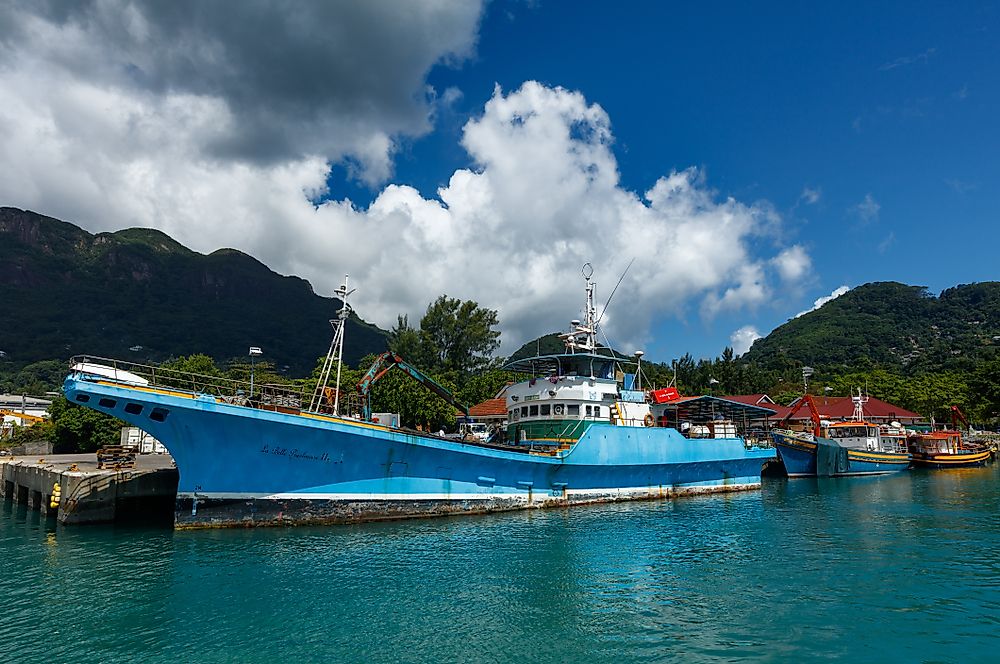What Are The Biggest Industries In Seychelles?

Seychelles is a 115-island country in the Indian Ocean whose capital, Victoria, is 932 miles east of mainland East Africa. It is an African country and a member of the African Union. With a population of just over 94,000 people, Seychelles is the least populated sovereign state in Africa. According to the country’s constitution, Seychelles is made up of 155 islands with most of the islands uninhabited and mainly dedicated as nature reserves. A group of 4 islands collectively referred to as "inland islands" have a total area of 244 square kilometers and account for 54% of the total land area. These 44 islands account for 98% of the country’s entire population. In addition to the 155 islands, Seychelles’ constitution also recognizes seven other reclaimed islands.
Overview Of The Economy Of Seychelles
After the proclamation of independence in 1976, Seychelles transformed its economy from agriculture-based to market-based diversified economy with agriculture replaced by a thriving service and public sector. The nominal GDP has increased over seven times over the years and purchasing power parity over 16 times. Today, Seychelles has the highest nominal per capita GDP in Africa. Despite the evident economic growth, poverty is widespread as a result of the economic inequalities and unequal wealth distribution among its population. Seychelles’ economy depends on tourism, fishing, coconut and vanilla processing, boat building, and agriculture. The public sector is the largest employer, accounting for two-thirds of the labor force and is also the highest revenue generator.
Tourism
Tourism is the second-most important sector of Seychelles’ economy after the public sector, accounting for approximately 17% of the country’s GDP. This sector also accounts for about 15% of the total workforce while other areas such as banking, construction, transportation, and other activities are also closely related to the industry. In 1999-2000, the industry generated about US$ 631 million with over 130,000 tourists visiting the country during the same period. In 2013, about 230,000 tourists visited the country compared to 2018,000 the previous year. The majority of the tourists come from Europe. The tourism sector contributed approximately 50% to the GDP and accounts for about 70% of the total foreign earnings. However, the import expenditure of the industry is high, lowering its net profits. The primary attraction in Seychelles is the coral beaches and water sports. Wildlife is also a significant attraction on the island country. The growth of tourism in Seychelles resulted from the completion of the Seychelles International Airport in 1971 and advanced rapidly to about 78,000 arrivals in 1979. The introduction of casinos in the 1990s further pushed the growth of this sector. To preserve the tourism sector and protect its natural attraction, the Government of Seychelles has limited the number of visitors to 150,000 per year.
Fishing
Seychelles is a small island developing state and does not have extensive land resources compared to other Africa’s mainland countries. It is also vulnerable to climate change. Thus, tourism and fishing are Seychelles’ two most important non-government sectors. In 2009, the industrial fishing surpassed tourism sector as the highest foreign exchange earner. In 2008, fisheries accounted for 77% of the country’s GDP and 97% of the export earnings. The industry employs about 17% of the total workforce and plays the main role in food security and income generation. The fishing industry has three main components; the artisanal fisheries carried out mainly by the local fishers using small motorized boats and targeting semi-pelagic species. The second component is the semi-industrial fisheries that are mainly locally owned with longliners targeting pelagic species. Finally, the industrial fisheries which are the backbone of the fishing industry and comprising of mainly foreign-owned fleets targeting Tuna species. Apart from the three major components of the fishing industry, there are also small trap fisheries that account for 15% of the total fish catch. Most of the fish caught are consumed fresh, but high-quality fish are sold to the export and processing firms for export mainly to Europe. Japan, France, Germany, the UK, and Mauritius are the destinations for around 92% of the country's fish output.
Farming
Agriculture has long been the basis of the economy of Seychelles. Before independence, the country’s economy was agriculture-based with the country relying on agricultural produce for both foreign earning and domestic consumption. During the plantation era, copra, vanilla, and cinnamon were the major exports. About 33% of the population were employed in the plantations. However, after independence, farming was replaced by tourism and fishing industries. Today, agriculture accounts for about 5% of the GDP. The total cultivated land on the island country is only 400 hectares.
Although there is abundant rainfall, involvement in farming is still very low. Because of the importance of this sector to the country’s food basket, the government has undertaken several measures to reduce dependency on food imports. Today, the major agricultural products are sweet potatoes, cinnamon, cassava, and banana. Tea is mainly grown on the slopes of Mahe and mostly serves the local market.
Manufacturing
The manufacturing sector has a significant impact on the economy of Seychelles. In 2011, it contributed 8.8% of the country’s total GDP. The manufacturing industry is estimated to be growing at a rate of about 4%. Most of the manufacturers are small scale, consisting mainly of food processing plants. Other components of this industry include chemical and furniture manufacturing. Export of manufactured goods and services accounted for 45% of the GDP in 2011. Other notable industries in Seychelles include financial service, health, and medical, transport and logistic, and energy industries.











